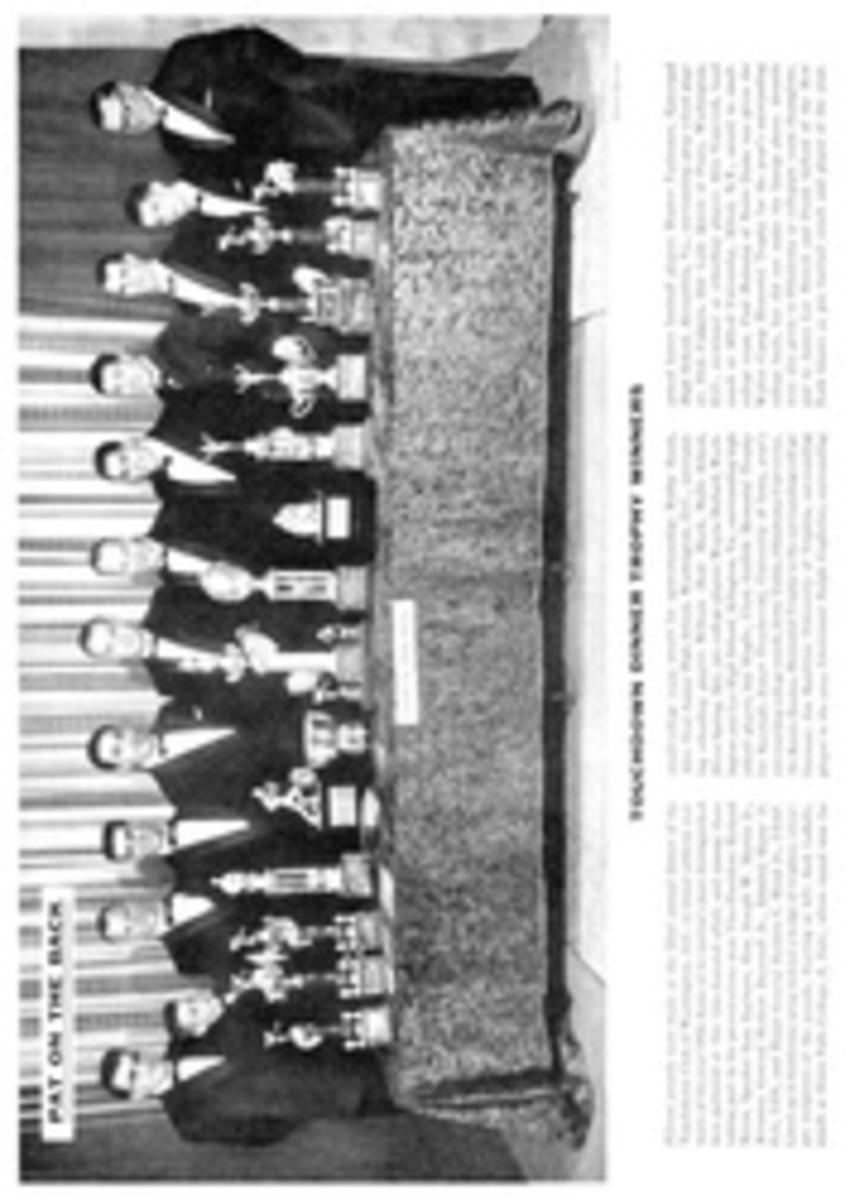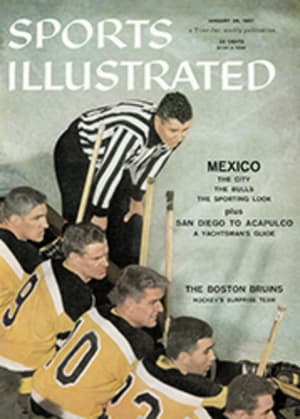
THE FOOTLOOSE SPORTSMAN IN MEXICO CITY
Whether you approach Mexico City from sea-level Acapulco or the U.S. highlands, a few days in the capital watching the bulls, languishing over lunches that end at half past 4, being serenaded by the mariachis, sitting down to dinner at 10 and living in a new chrome and glass hotel is an interlude on Cloud Nine. For one thing, Mexico City—which was built at 7,400 feet—is, let's face it, cloud-high. For another, unless you count the perilous moments in Mexican traffic, the tourist life in this eagle's nest is arranged for an idler's pleasure.
About all that one need hurry to is the corrida which commences at 4 each Sunday, but the color outside the bull ring is so vivid it is good to come early. Peddlers push pineapples, fry sausage, sell nuts, sunglasses, straw hats, soft seats, the day's program printed on silk and almost anything but tranquilizers. After the corrida the bullfight buffs repair to the Tupinamba at 45 Bolívar, which has a coffee counter on one wall, a bulletin board on the other, and looks not unlike an Automat with press clippings. Since it is rather hard to determine who performed in the afternoon's alfresco abattoir, a picador looking like a plumber when not dressed as a picador, it is handy to show up with a member of the local cognoscenti as guide.
This past December, when humble Mexicans were trooping in from all over the country to pay annual homage to the Virgin of Guadalupe, many of them walking the whole way and managing the last few blocks on their knees, the bullfight impresarios were no less pious. They celebrated by staging a sort of World Series of bullfighting at the refurbished Plaza El Toreo with a daily corrida from December 7 through December 12, the holy day. Thirty-six bulls were killed, and the event was so successful that it may become an annual fixture.
Among other forms of exercise peculiar to the region is jai alai performed by ladies, a pastime which takes place regularly at the Frontón Colón, in the middle of town. The ladies, done up in white tennis dresses, have at the ball with specially strung tennis rackets rather than the usual baskets but, chunky darlings that they are, belt the thing so you could hear the ricochet in Flatbush. To the Mexicans, for whom a whistle is a boo, the females' Frontón is one place where a man can whistle at a girl without lifting any eyebrows.
The air is much more sedate and restful out along the far reaches of the Paseo de la Reforma, where a horsy crowd watches the polo at the grounds each Sunday. Charros in their immense hats and their Rio Rita costumes ride down the center bridle path of the Paseo, an elegant avenue which leads out from a boulevard of fashionable downtown hotels and restaurants.
Lounging over a lunch in the Focolare, located at the un-Hispanic address of Hamburgo No. 87, one has the feeling of dining with immense grace in the hacienda of a noble Mexicano. There is a fireplace to cover the chill of an evening, a waterfall to suggest the nearness of the out of doors, potted plants suspended from the balcony and, unlike any place in Manhattan, there isn't a banquette in sight.
The Quid at Puebla No. 154 exudes leather and deep pile and features a parrilla al carbón, or a charcoal grill which is sealed in a glass enclosure. Similarly protected but on view is a barside garden inhabited by a troop of toucans which are equipped with bills that are red, green, yellow and perhaps other colors depending upon how long you have been lingering on the bar stool. Equally natty, if perhaps not quite so bizarre, is the new Delmonico, where the architect installed a water-hole in the bar, complete with floating pots and, I suspect, from time to time with floating revelers.
Mexico's newest hotels have vastly increased the number of upholstered saloons and supper clubs where one may malinger. The new Alffer, which is making its service a point of pride, has a rooftop glass box called the Rondinella, as well as its tony Indra Restaurant and its Under the Cactus bar. I should mention that the roof is for more than moon-gazing since there is a sundeck with bar and food service, a putting green and, in addition, one rooftop suite comes with its own pool.
The Continental Hilton, which has just opened, is a 16-story extravaganza with 400 rooms all equipped with bath, radio, telephone and air-conditioning and many with balconies looking off to Popocatepetl, Ixtacihuatl and other attractions of awesome sight and spelling. The Belvedere is the Hilton's starlit cote with glass walls, and near it is the tiny La Joya (The Jewel), where the haute monde of Mexico eats the haute cuisine of France on a cantilevered terrace overlooking a statue of Cuauhtémoc, last of the Aztec princes.
Just next door to the Hilton is a late nook called El Paseo, which is sort of a breath of Manhattan or, at this altitude, perhaps a short pant. There is a continuous piano and a scratchy male voice to enunciate the lyrics of old Broadway shows. On the opposite hand, anyone in search of real Mexico might seek out the Tenampa at Plaza de Garibaldi No. 12 off the northern extension of the Avenida San Juan de Letràn, which is a huge noisy armory alive with mariachis. The whole sector along Letràn, which sleeps by day, comes to a high boil at night with curio shops, tortilla stands and cantinas the likes of the Tenampa, all open and bubbling. Wandering hordes of guitar players come and go, and a sign in one den invites men to desist from breaking glasses on the floor, as lots of ladies prefer to dance there barefoot.
Those in search of a late snack that will not keep a fire burning in the stomach all night will find an all-night American-style ham-and-eggery in the new Sanborns off the Paseo de la Reforma. Sanborns also dispenses without prescription, should you have developed a state of nerves, some 50 Nembutals a day, a rate which apparently is enough to calm any Mexican but not enough to kill him.
In many other ways, Mexico is a marvelous place in which to shop. Handicraft from all over the country is gathered under one roof at the Museo Nacional de Artes e Industrias Populares. The stock, which varies from week to week, may include anything from a candle made like a yellow and green pineapple to mammoth etched hurricane shades. Hand-blown blue-green glassware is a great bargain, and Mexico's famed silver is available both here and in a wide selection of shops along the Avenidas Juarez and Madero.
Should an insatiable thirst come over you while in that neighborhood, a good first aid station is the Ritz Bar. Aside from the bull brands of renowned haciendas which appear in its mirrors, the Ritz saloon is also famous for its mural of Xochimilco done by Covarrubias, which is enough of a conversation piece to make an odyssey to Xochimilco or, for that matter, any further shopping quite unnecessary.
PHOTO
NEW LUXURY HOTEL, Continental Hilton, exemplifies the rakish architectural style now fashionable in the Mexican capital.
PHOTO
A GREAT MOMENT in Feria Guadalupana comes as Matador Antonio Ordó√±ez wills bull Cascabel to die. Ordó√±ez won both ears and tail for one of most brilliant faenas since Manolete fought in Mexico.

